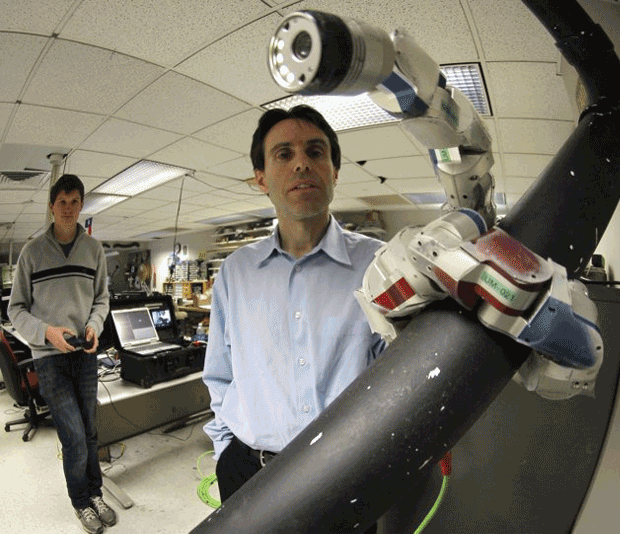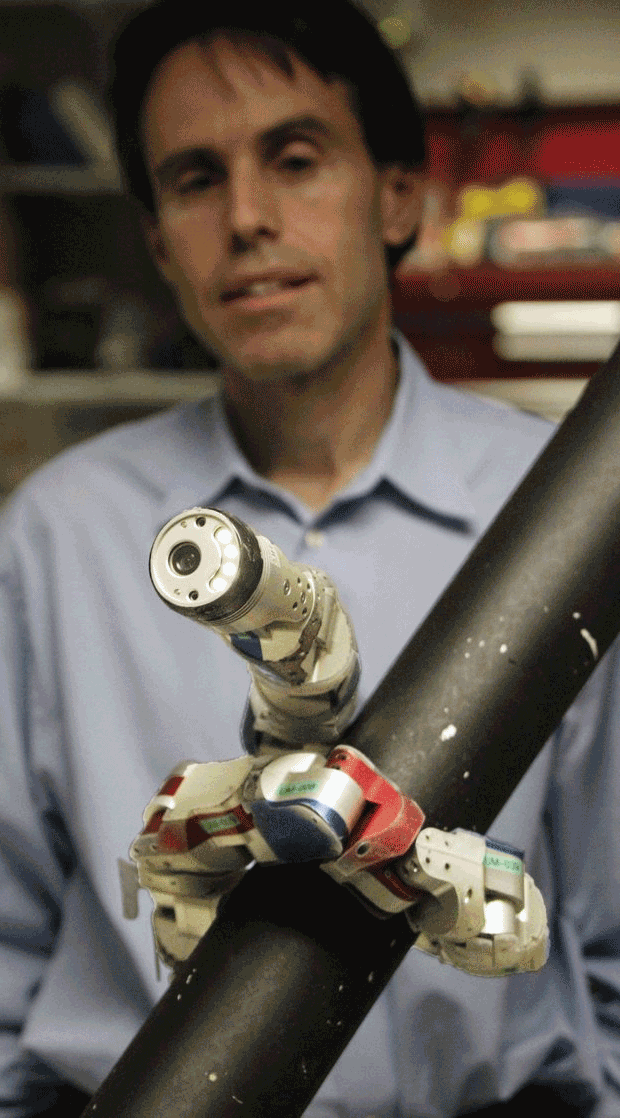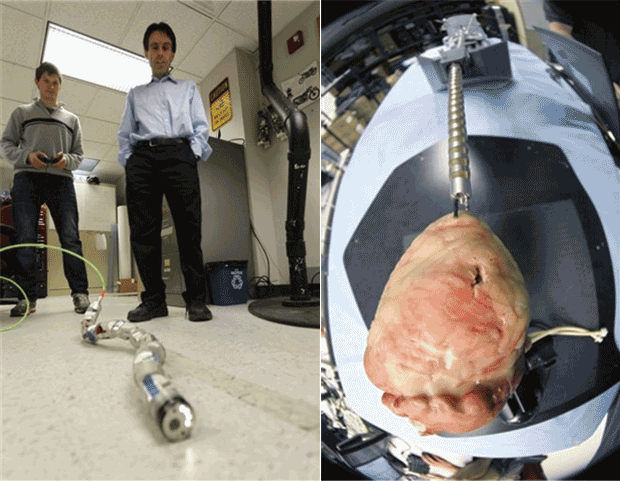|
Imagine a tiny snake robot crawling through your
body, helping a surgeon identify diseases and perform operations.
It's not science fiction. Scientists and doctors are using the creeping
metallic tools to perform surgery on hearts, prostate cancer, and other
diseased organs. The snakebots carry tiny cameras, scissors and forceps,
and even more advanced sensors are in the works. For now, they're
powered by tethers that humans control. But experts say the day is
coming when some robots will roam the body on their own.
"It won't be very long before we have robots that are nanobots, meaning
they will actually be inside the body without tethers," said Dr. Michael
Argenziano, the Chief of Adult Cardiac Surgery at New York-Presbyterian
Hospital and Columbia University Medical Center in New York.
Argenziano was involved with some of the first U.S. Food and Drug
Administration clinical trials on robotic heart surgery more than 10
years ago. Now he says snake robots have become a commonly used tool
that gives surgeons a whole new perspective.
|
|
 |
|
"It's like the ability to have little hands inside the patients, as if
the surgeon had been shrunken, and was working on the heart valve," he
said.
But Argenziano and experts in robotics say the new creations work best
when they're designed for very specific tasks. "The robot is a tool. It
is no different in that sense than a scalpel. It's really a master-slave
device," he said.
Howie Choset has been researching and building robots, particularly
snake robots, at Pittsburgh's Carnegie Mellon University for years.
Mr Choset believes that his snake robot and others like it help reduce
medical costs by making complex surgeries faster and easier. Mr Choset
says his new design is smaller and more flexible than earlier models:
The diameter of the head is less than the size of a dime.
The size of surgical robots allows surgeons to operate with far less
damage to the body, helping the patient heal faster. For example,
instead of opening the entire chest up during heart surgery, a small
incision is made, and the robot crawls inside to the proper spot.
|
|
 |
|
Dr Ashutosh Tewari of Cornell University Medical Center has used robotic
tools to perform thousands of prostate operations. He said the precision
of the tiny robotic tool is vital not just to cutting out cancerous
tumors, but to seeing exactly what nerves to leave intact.
Dr Tewari said he's most excited about the potential for surgical robots
to do things humans can't do. He said the variety of sensors available
for surgical robots keeps expanding, even as they get smaller. He said
they may one day be able to test chemicals or blood in the body, or even
the electrical connections in nerves.
Mr Choset has also built larger snake robots designed for search and
rescue, or just exploration. They can climb poles or trees and then look
around through a camera in the head, and slither through places humans
can't reach.
"We sent our snake robots into these caves off the coast of the Red Sea
to look for evidence of ancient Egyptian ships," he said. "To me
archaeology is like search and rescue, but everyone's been dead for
5,000 years," reducing the pressure.
Another expert at Carnegie Mellon stresses that there's still an
enormous gap between humans and even the most high-tech robots. Manuela
Velosa noted that robots have been built that excel at one or two tasks
- but not at the variety of tasks humans perform without even thinking.
|
|
 |
|
Ms Velosa has been building robots that ask humans for help when they
don't know what to do, as well as teams of robots that play soccer
against each other. Sometimes, the robots surprise her.
During one soccer game against robots from another university, the
Carnegie Mellon team scored on a particular play. That sent a positive
signal to the robot's computers, which are designed to reward success
and discourage failures in the game.
Her robots then tried the play again - and scored again. It turned out
they had discovered a programing flaw in the other team of robots, just
like some sports teams find a flaw in their opponents.
In the second half Ms Velosa's robot's kept using the same play, scoring
every time, and thus reinforcing the tendency to try the play over and
over. The robots crushed the other team.
"It was programmed by me, but it looked to me as if they learned," she
said. "I believe we are much closer to having robots be able to coexist
with humans. The beautiful thing is you see the robots learning." |